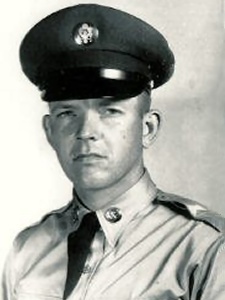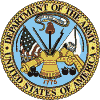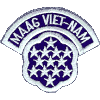| |
|
|
|
James Thomas Davis
Specialist Four
3RD RADIO RESEARCH UNIT, ARMY SEC GROUP VIETNAM, MAAGV Army of the United States Livingston, Tennessee June 01, 1936 to December 22, 1961 JAMES T DAVIS is on the Wall at Panel 1E, Line 4 See the full profile or name rubbing for James Davis |
 |

|



| |
|
In 1958, James T. Davis - his friends called him "Tom" - had been pursuing his studies at Tennessee Technological University (TTU) in Cookeville, about 20 miles from his boyhood home of Livingston. Tom's childhood resembled a Norman Rockwell print: excelling on the football field for Livingston Academy, or hunting and fishing in the deep woods that surrounded his hometown. He decided, before finishing his senior year at TTU, to join the United States Army. He enlisted and was sent first to Fort Jackson for basic training and then to Fort Devens for instruction in "direction finding". In May 1961, he received orders to join the 3rd Radio Research Unit, Republic of Vietnam. Davis' unit had a difficult and dangerous job. The 3rd Radio Research Unit provided technical advice to South Vietnamese units on locating enemy signals, and provided valuable training and guidance on ways to get a "fix" on the insurgents' locations. But in Indochina, climate and terrain made the art of direction finding extremely tricky. Due to the mountainous landscape and the high levels of humidity in the area, it was difficult for them to conduct their work in a safe and secure location far from the battlefront. Davis and the units he worked with had to "get in close" to be successful. On 22 December 1961, Davis received orders to lead a Vietnamese team to an area approximately 12 miles from the base in an effort to locate a Viet Cong guerilla force operating in the area. They would move by truck to the area, set up, and in concert with a similar team, attempt to locate the enemy. Initially, the operation appeared to be routine; however, 10 miles outside the base, near a former French garrison at Cau Xang, the hunter became the hunted. The truck carrying the team hit a strategically-placed land mine and was forced off the road. The group immediately came under attack. Davis and his men fought bravely, but eventually succumbed to enemy fire. A patrolling South Vietnamese Civil Guard unit quickly responded to the area, but it was too late. Davis and nine members of his team lay dead. Davis was not actually the first American to lose his life in combat in Vietnam. But apparently President Lyndon Johnson, in a speech made years later, referred to Specialist 4 James T. Davis as "...the first American..." and now several web sites refer to Davis this way. In any event, he was one of the first, and two weeks after his death, in tribute to Davis' service and sacrifice, his unit's headquarters in Tan Son Nhut would be named "Davis Station." Much of the above information came from the National Security Agency article on SP4 Davis. |
Notes from The Virtual WallPresident Johnson was sadly misinformed if he identified SP4 Davis as the first American lost to hostile action in Vietnam. Fifteen servicemen - 6 Air Force, 5 Army, and 4 Navy - had been killed or listed as missing in action by the time SP4 Davis' team was wiped out, and nine others had died of illness or non-hostile injury.For the record, the first "official" Vietnam loss is Air Force Technical Sergeant Richard B. Fitzgibbon on 08 June 1956; regretably his son, Marine Lance Corporal Richard B. Fitzgibbon 3rd, also appears on the Wall - he was killed in action on 07 Sep 1965 while serving with H&S Company, 1/4 Marines. The first hostile action losses were two members of an Army advisory team, Major Dale R. Buis of Pender, Nevada, and Master Sergeant Chester M. Ovnand , of Copperas Cove, Texas, who were killed (along with two ARVN security guards) in a VC raid on the team's Bien Hoa headquarters on 08 July 1959. None of which, of course, detracts in any way from SP4 Davis' service to our country. |
| Contact Us | © Copyright 1997-2019 www.VirtualWall.org, Ltd ®(TM) | Last update 08/15/2019. |